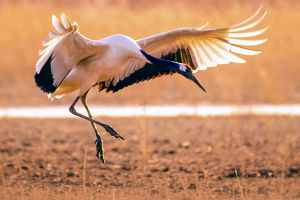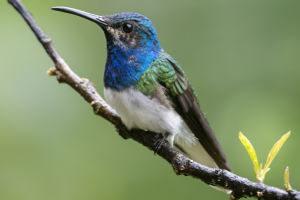Snow hares, also known as arctic hares or white hares, are a type of rabbit that are well adapted to living in boreal or sub-boreal regions with snowy environments.
Their fur turns white in winter to blend in with their surroundings and avoid being detected by natural predators.
One of the most representative snow hares is the snowshoe hare, which is found in diverse habitats across high latitudes in Europe, Asia, and North America.
Snowshoe hares are about 50 cm long and have short ears and tails. Their fur is russet in summer and pure white in winter, with only the tips of their ears and eye rims being dark brown.
In addition to the snowshoe hare, North America is home to another similar type of rabbit called the white-booted hare.
This rabbit also changes its coat color with the seasons, turning pure white in winter and brownish-gray in summer.
However, the white-booted hare has a unique feature of having thick fur on its hind paws, resembling oversized snow boots. This adaptation helps them walk and jump in the snow and keeps their feet warm.
Snow hares are mainly nocturnal and feed on herbs, bark, and shoots.
They are timid and fearful animals, and when in danger, they quickly flee or hide in burrows. They are also skilled at digging tunnels and burrows, which leave a series of beautiful footprints in the snow.
Snow hares are cold and heat tolerant and can survive in a variety of environments. They do not dig holes but build simple dens under grasses or shrubs.
Despite their unique adaptations and survival skills, snow hares still face various threats and challenges.
The first is the threat of natural predators such as wolves, foxes, bobcats, and hawks. These predators have a keen sense of sight, smell, or hearing, which makes it easy for them to detect and hunt down rabbits hiding in the snow.
Another significant challenge that snow hares face is the impact of climate change.
As global warming continues to reduce snow periods and increase temperatures, white fur in some areas can become a factor that exposes their location, increases body temperature consumption, and is not conducive to their safety and energy conservation.
Therefore, many people in human society are committed to protecting these precious and adorable animals.
They raise awareness of the importance and value of these animals and their ecological environment through scientific research, public education, and policy advocacy.
They also take effective measures to protect these animals, such as setting up protected areas and establishing conservation programs to minimize the impact of human activities on their natural habitats.
Snow hares are beautiful and unique animals that have adapted well to living in snowy environments.
Their ability to change fur color with the seasons is just one of their many survival skills.
However, snow hares still face many challenges, including natural predators and the impact of climate change.
Protecting these animals is not just about preserving a single species but also about maintaining the biodiversity and ecological balance of their environments for future generations.


